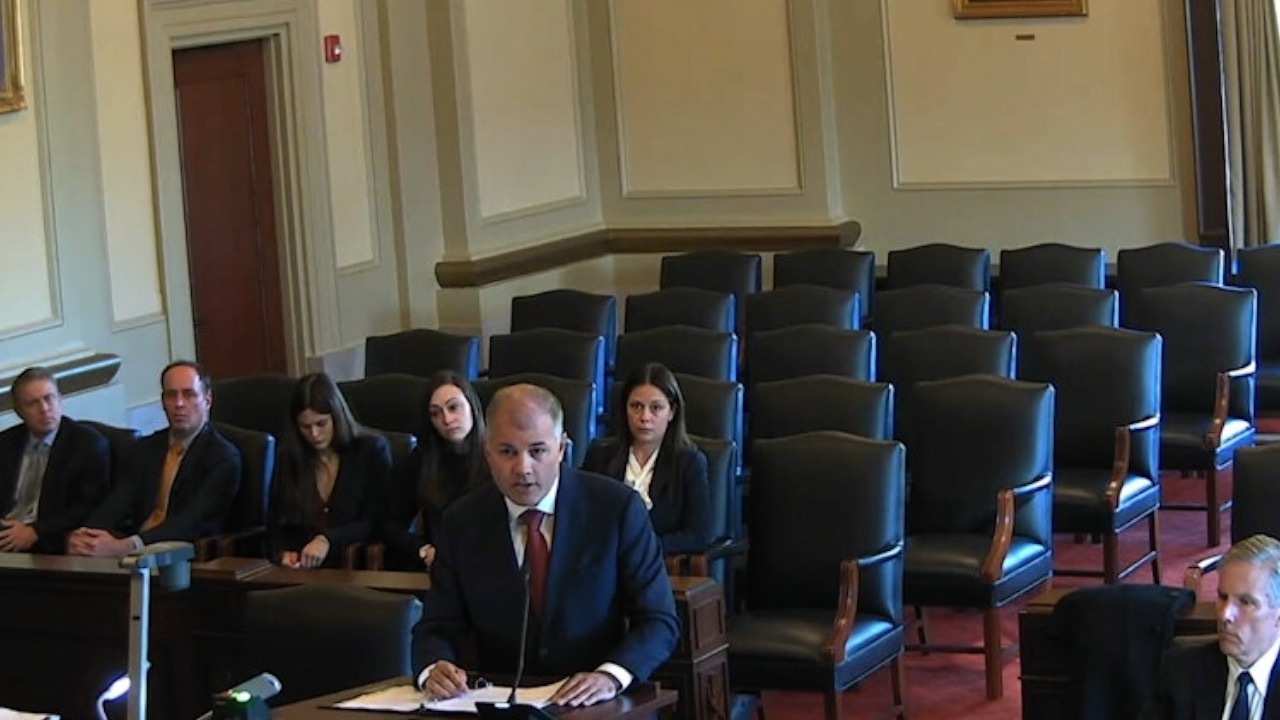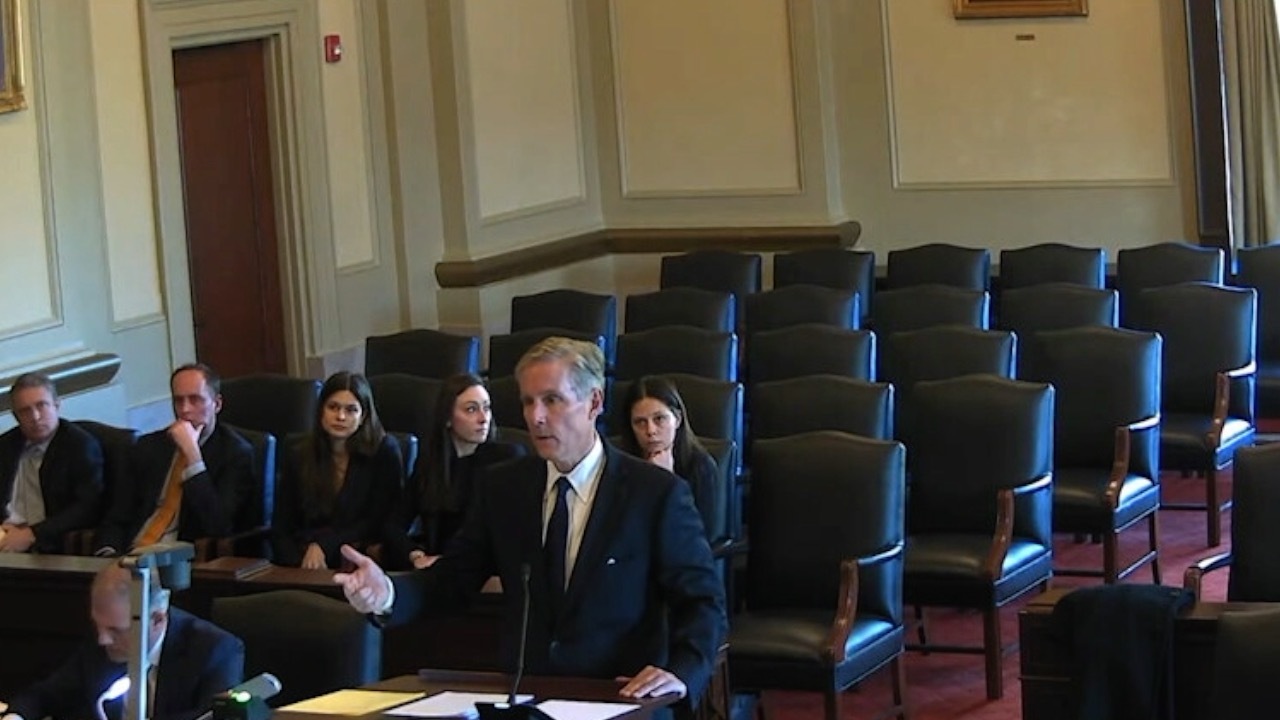- The state Court of Appeals will decide whether to revive a lawsuit filed against the Confederate monument sitting outside the Alamance County courthouse in Graham. An appellate panel heard an hour of oral arguments in the case Tuesday.
- Opponents led by the North Carolina State Conference of the NAACP argued that the county's decision to maintain the monument represents an act of racial discrimination.
- Alamance County argued that a 2015 state law blocked county commissioners from taking any action involving moving the monument.
Plaintiffs led by the North Carolina State Conference of the NAACP want the state Court of Appeals to revive their lawsuit against the Confederate monument that sits outside the Alamance County Courthouse in Graham. A three-judge appellate panel heard an hour of arguments in the case Tuesday.
A trial judge ruled in favor of the county. Opponents urged the panel to reverse that decision.
“This particular monument — not all Confederate memorials, certainly not all monuments — but this particular one in Alamance County, situated as it is on the place where Mr. Wyatt Outlaw was lynched in 1870, dedicated in 1914 by someone who praised the monument as standing as a memory to the great achievements of our own race and blood, dedicated by Mr. Henry London, who was on record as wanting to purge North Carolina of the ignorant Negro vote, … we have laid out plenty of evidence that this particular monument commemorates white supremacy,” argued Mark Fleming, the Boston-based lawyer representing the plaintiffs.

The evidence should lead at least to a “declaratory judgment of unconstitutionality” against the monument from a trial court, Fleming said. Opponents also hope to have a trial judge rule that the monument should be moved.
“This case is not about whether you like or dislike Confederate monuments,” argued Christopher Geis, the Winston-Salem-based attorney representing Alamance County. “It’s about the rule of law, and whether we are going to — as a court and as a society — honor the rule of law, even when that law might not be popular with some.”
Geis pointed to a 2015 state law banning the removal of historical monuments from public property. “The Alamance County monument was erected 109 years ago, and the law was passed eight years ago,” Geis said. “Nothing has changed in the intervening time periods except the opinions of some people that the monument does not belong there.”
“This monument controversy has been going on for eight years and five months,” Geis added. “Four eight years and four months of that time, that monument law has been in place — tying the county’s hands.”

Opponents argue that the monuments law cannot stand in the way of their claim that the Alamance monument represents racial discrimination. “The Constitution has to trump the statute,” Fleming argued. “It’s the supreme law of North Carolina. We don’t think there’s any question about that, which is why I say the monuments law is in many ways a red herring here.”
Judge Chris Dillon questioned whether Alamance County has the legal right to take any action. “The General Assembly has said, as I understand it in that statute, ‘County, you cannot move that statue,’” Dillon said. “So they don’t have the authority to move it unless the … North Carolina General Statute is unconstitutional. They don’t have the authority to do anything.”
Even if the monument law did not apply, Dillon asked about Alamance County commissioners’ decision to leave the courthouse monument in place. “I guess there are things erected that were erected for improper or bad purposes in the past,” he said. “Sometimes, governments just choose — it’s a history marker, maybe it was a slave market or something like that — we just want to leave it there as a reminder because … if you erase the past, then you’re condemned to repeat it.”
“Tell me why Alamance County … how they violated the Constitution by making the decision, ‘We’re just going to leave that thing there,’” Dillon added. “Why isn’t that a policy decision that they’re … allowed to make?”
Chief Judge Donna Stroud asked about the impact of evidence focusing on events in the 19th and early 20th centuries.
“You’re coming up with evidence of the intent of people many, many years ago who are no longer around and also the sort of subjective feelings of people now about it,” Stroud said. “It would seem to me … there could be a group that could challenge anything by finding something about its past and then finding someone who doesn’t like it now.”
Referencing concerns some people have about the American flag, Stroud concluded, “I’m trying to figure out where the limits of that are.”
A question from Judge Valerie Zachary suggested that the monument’s opponents might need to look elsewhere for relief. “Is it your contention then that the plaintiffs’ recourse is to vote for new legislators?” she asked Geis.
Yes, the county’s attorney responded. “The remedy here is for people to change the law,” Geis argued. “The county has no authority to defy the legislature. It cannot override it. Under our law, it must follow the legislative pronouncement here.”
“The legislature in 2015 expressly took this issue away from local governments,” he added. “What this case is really about is the plaintiffs’ desire to substitute their personal policy preferences — however reasonable — for a valid law enacted by the legislature and followed by the Alamance County commissioners.”
“The remedy lies with the democratic process,” Geis said. “If you do not like the law, change it or vote in elected officials who will.”
Stroud asked Geis about the plaintiffs’ claim that the monument promotes white supremacy, rather than Confederate military service.
“There is nothing on the monument’s face that depicts or promotes white supremacy,” Geis responded. “There is nothing in the record of a statement by an Alamance County commissioner or public official supporting white supremacy. The plaintiffs have their view of it. The Alamance County commissioners have a different view.”
“Some people view the monument as honoring their ancestors or honoring war dead,” he said. “After all, that is what the monument is. It is a monument to honor war dead — people who fought and died in a war, some of whom may not have agreed with it.”
There is no deadline for Stroud, Dillon, and Zachary to issue a ruling.